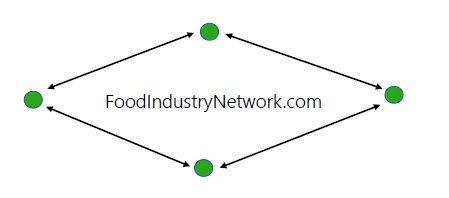Buy Local Story – Western Grocer

“Buy Local” is making waves in grocery channels as more and more consumers are becoming aware about where their food comes from. This increased awareness presents both challenges and presents opportunities for Canadian producers and grocers.
Buying Local, of course, can mean a lot of different things to different people. For some, it means anything produced within a 100-mile radius, while for others it means anything produced within a given province and, in some cases, within a given region such as western Canada.
The Conference Board of Canada’s report called Cultivating Opportunities: Canada’s Growing Appetite for Local Food, defines local food as food that is grown, processed, sold and consumed within the local area, whether a community, region or a province. Although the report found that the economic impact of local food systems is most significant in Quebec and Ontario, across Canada, 20 per cent of food is consumed within the same province in which it is produced—a widely-used definition of local food. The Canadian Food Inspection Agency defines “local” as within the province or, when crossing provincial borders, within 50 kilometres of the province where it was grown.
The Conference Board report shows that consumers indicate that some of their motivation for purchasing local food is to support their local economy and farmers. Many also believe that local produce is fresher than alternatives.
Four in five Canadians say they’re willing to pay a premium for local food, yet only a quarter of them are making a priority of buying it. A study by Dalhousie University’s Agri-Food Analytics Lab asked 10,266 Canadians about local food: how they define it, whether they would pay extra for it, whether they actively seek it out, and more. The study shows Canadians have an appetite for local food, but, when it comes to buying it, many choose price first, and local food is often more expensive, since it’s usually cheaper to buy an import than it is to buy fresh from a locally funded operation. Perhaps unsurprisingly, the study found younger Canadians were more likely than baby boomers to pay a premium for local food.
Within the last two years, the buy local movement has gained a lot of traction in western Canada as the provincial food processing associations have launched awareness campaigns to identify at the retail level what products are locally produced, using a definition based on products produced within provincial boundaries. These campaigns have meet with considerable success and, along with consumers own inclination to buy local, have given a big boost to local processors who before had difficulty competing for shelf space with the large multi-national corporations.
Many large retailers such as Safeway, Sobeys, and Loblaw have embraced the “buy local” movement. As the report explains they are making it work through campaigns like Loblaw’s “Grown Close to Home”. For both larger and smaller retailers, it’s important to promote local products with things like in-store signage and advertising that communicates the importance and history local food. Educating staff and customers about the attributes and origins of local products and inviting local producers into stores to introduce their products to consumers can be effective as well.
For those of us in western Canada, it can be difficult to locally buy produce for most of the year. Greenhouse operations have partially addressed this but can’t meet all the demand. Moreover, it is still more expensive because of the high costs involved to grow produce year-round north of the border. More investment in this area could increase the country’s food autonomy — and ultimately to decrease the price of local food.
While many believe there is a strong connection between buying local and sustainability, this question is not as straight forward as one might think. It could well be that food grown even in other countries may be more sustainable than locally produced foods depending on the processor’s practices.
Eating more local food will, however, reduce CO2 emissions by reducing food miles — the distance food travels from farm to consumer. The average piece of produce in the U.S. travels 1,500 miles, while local food may only travel 100 miles or less.
Buying local food also helps preserve green space, and therefore sustainability. When local farmers are well compensated for their products, they are less likely to sell their land to developers. Likewise, with growing consumer demand, young farmers are increasingly likely to enter the marketplace by developing unused space, such as empty lots, into thriving urban gardens — many of which are grown organically.
For retailers, embracing the Buy Local movement is an important way of connecting with and supporting the local community and helps them meet their ESG goals.
Sidebar: Top Reasons to Stock Local
•Local food can be better for your health by retaining more nutrients. Local produce is allowed to ripen naturally, while food that travels long distances is often picked before it’s ripe. And food picked fresh and in season doesn’t have far to travel before being sold.
•Choosing fruits and vegetables grown in season may also be healthier. When researchers at Montclair State University compared the vitamin C content of broccoli grown in season with broccoli imported out of season, they found the latter had only half the vitamin C.
•In addition, locally grown produce may be safer. When they are imported and out of season, fruits like tomatoes, bananas, and pears are often picked unripe. And then, they are artificially “ripened” with ethylene gas.
•Foods from local growers may contain less (or no) pesticides. Farmers have to pay an extra fee to become certified organic. Some small-scale farmers use organic methods but aren’t certified because they simply aren’t big enough to be able to afford the certification fees. Even if they aren’t organic, small farmers tend to use fewer chemicals than large, industrialized farms.
Source: westerngrocer.com

